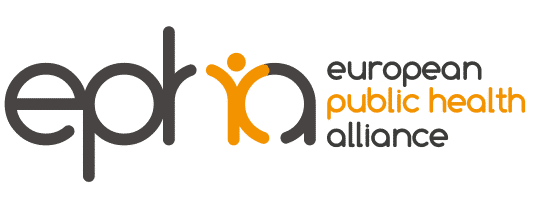September 2013 -Prior to the publication of the European Commission’s Green Paper on mobile Health (mHealth) later this year, EPHA is releasing a briefing paper that highlights some of the principal issues related to the debate.
Mobile health – also known as mHealth – can be understood as the use of mobile and wireless devices to improve health outcomes, healthcare services and health research. It is a component of the larger discipline of eHealth, which in turn can be defined as the general use of information and communication technologies (ICT) for health purposes.
Given the rapid dissemination of smartphones and their associated ‘apps’, as well as of other mobile devices and gadgets aimed at facilitating elements of healthcare provision, simplifying routine tasks of patients and health professionals, and improving our health and wellbeing, the EPHA Briefing on mobile health (mHealth) discusses its functions, opportunities and potential benefits for patients, health professionals, providers and vulnerable groups, while keeping a firm eye on the limitations of ‘health on the go’. As noted in the eHealth Action Plan 2012-2020, a ‘blurring’ of roles and responsibilities is taking place.
As healthcare moves out of the medical/scientific sphere into a personalised ‘consumer’ realm, a number of ethical and practical questions arise that must be approached with caution.
Why mHealth?
One of the biggest breakthroughs of mHealth is the obvious fact that the data suddenly ‘becomes mobile’. Information can be collected, transmitted and exchanged wherever and whenever it is necessary, while new communication channels are opened up between and amongst health professionals and patients that may eventually alter the provision of healthcare as we know it. This can be both empowering if implemented correctly and equitably, but also disconcerting if it is done in a haphazard fashion.
Considering advantages and disadvantages
In practical terms, mHealth can support health systems’ quest for efficiencies and cost savings, e.g. by helping to ensure treatment compliance, monitoring patients remotely, providing patients with tailored information and involving them in data collection and disease surveillance. Patients can also take advantage of convenience features such as booking appointments and prescription renewal, while linking up with individuals suffering from the same condition. Interactive terminals installed at home can provide a sense of security for older people who know that their movements, vital signs and conditions are routinely checked by qualified health professionals (particularly reassuring for people with chronic diseases). Moreover, mobile applications allow patients to acquire more health knowledge and thereby they are potentially more inclined to control their behaviours and exert self-control.
For health professionals, mHealth promises expedition of daily tasks and access to information while dealing with patients. For example, patient data from previous check-ups is obtained more easily and clearly, while tools such as tablets allow easy recording of information during consultations and help illustrate medical issues. Educational tools and ‘apps’ develop medical knowledge and professional skills.
A key benefit mHealth brings is the promise to reach a larger percentage of the population, including vulnerable groups who may neither have the financial means nor possibilities for accessing other ICTs. They may be more comfortable using wireless devices, such as smartphones, which are relatively inexpensive, multifunctional, and easy to navigate. Moreover, they do not rely exclusively on traditional literacy skills but integrate features such as voice recognition, pictograms, photographs, videos, GPS, etc. which enables multilingual and culturally relevant and ‘customised’ content. That said, cost, insufficient access (e.g. to broadband), and lack of ‘eHealth literacy’ remain significant barriers to many would-be users, especially members of vulnerable groups, the poor, and specific categories of patients (e.g. people with poor mental health).
While technology can generate enthusiasm, people who lack a sufficiently high level of health and IT knowledge are also easily influenced by harmful messages as they cannot distinguish between bona fide and bogus sources of information. Taking information at face value, e.g. results of self-diagnosis, can trigger dangerous reactions. Hence mHealth should be controlled and assessed by health stakeholders.
Moving forward
The current lack of evidence-based facts makes it difficult for policy makers to assess mHealth’s potential. Moreover, technology is progressing faster than the legal framework surrounding it. Therefore it will be important to develop standards and policies aligned with the technological demands of mHealth while ensuring that it will ‘Include Everyone’, as recommended by the eHealth Task Force Report, Redesigning health in Europe for 2020.
Many of the challenges applying to eHealth, regarding access, interoperability, legal uncertainty, data protection, policy incoherence and user-friendliness also apply to mHealth. However, the fact that it is closer to the individual and allows for customisation makes it more promising as a complementary tool for integrating health into daily routines, and for tackling health inequalities.
On the other hand, without embedding mHealth into overall health system policies, promoting eHealth literacy, and establishing appropriate standards and guidelines to ensure quality products and services mHealth will not be able to fulfil its promise.
